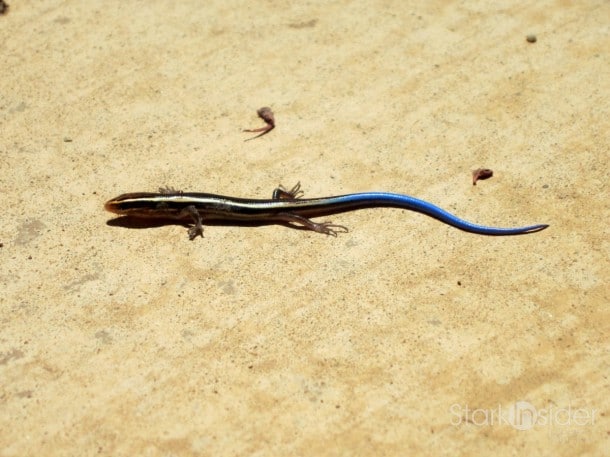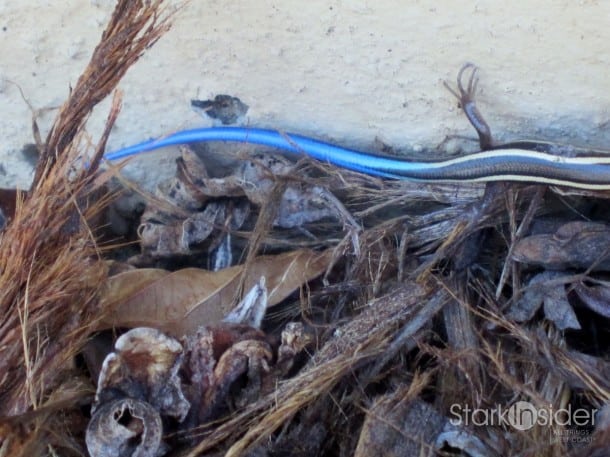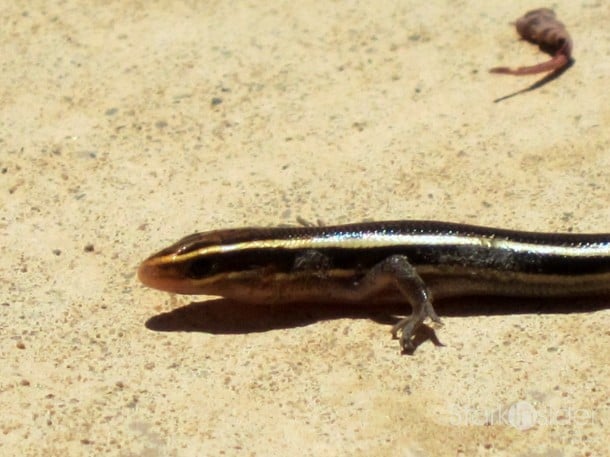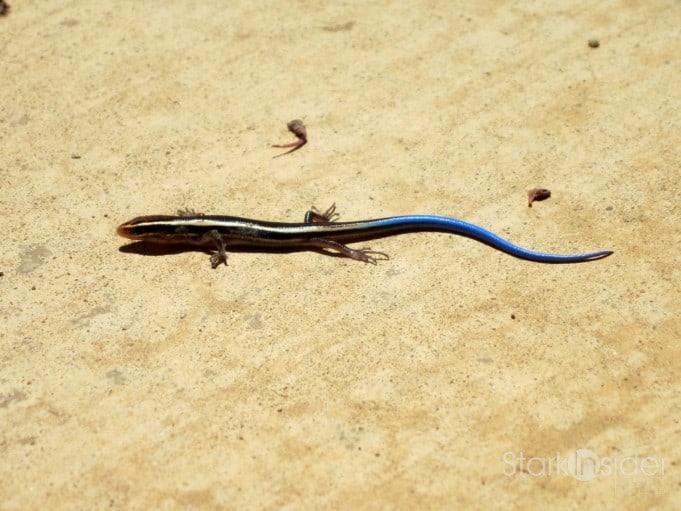
If you happen to spot a tiny lizard in the Bay Area with a bright blue tail (as seen in the above photo), chances are you’re looking at something called a Plestiodon.
As I learned after a bit of web research, if the little guy still has the blue tail, that means it’s the original. When afraid, it will drop the tail as a means of distraction – not unlike Beyonce I reckon. A new tail then regenerates, albeit shorter and with matching body color.
Typically these lizards are 4-6cm in length.
I spotted this on in our yard, and watched it slither elegantly across the garden. Normally the lizards I see are larger, so I thought this was a baby one. However, as I learned this species has just evolved that way.
Slow news day? Yes, then again it’s Sunday, it’s summer and the Sonos S5 is streaming some great warm weather beats. Review coming soon.
And, yes, this is the best I could do with the PowerShot… I continue to desperately await the return of the Canon T2i DSLR from the repair facility.




